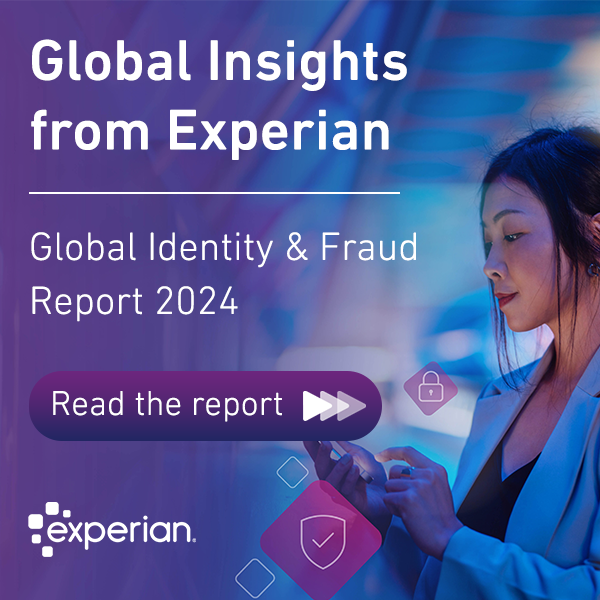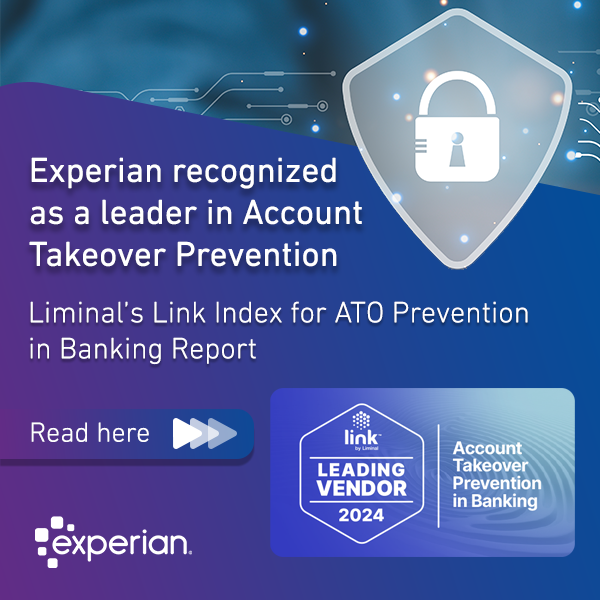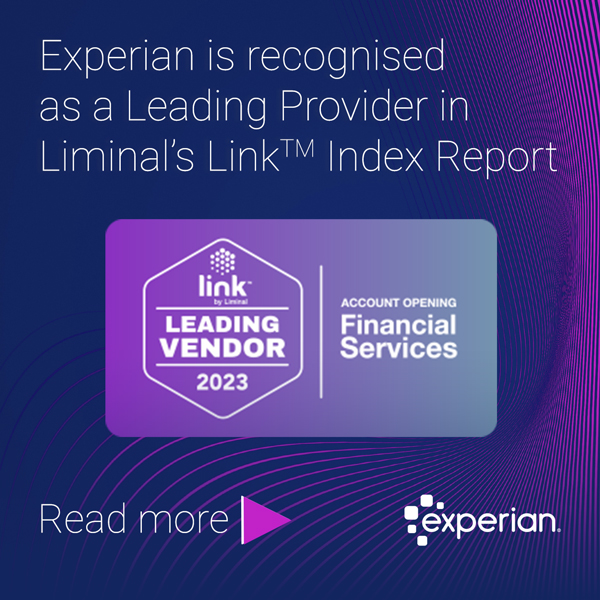Monthly Archives: December 2021

Transaction data is some of the most valuable data a financial institution holds. By understanding how and where customers are spending money, businesses can leverage that insight to provide exactly the right next service or cross-sell product that a customer will most likely use. With open banking, this data is becoming democratized. It allows customers to give other institutions and businesses permission to access the data, which helps mid-market lenders and fintechs compete on the same playing field as the larger banks. In addition to spurring competition and innovation, it offers the potential for greater financial inclusion to people who struggle to gain access to credit due to a lack of information on their financial track record. The impact of open banking can’t be understated. According to Accenture, it will account for roughly $416 billion in revenue across the top 20 economies once open banking is fully online. And that day is closer than you might think; a survey by Know-It revealed that 55% of UK credit providers said they plan to adopt open banking in 2021, while 93% of businesses expect to adopt the data-sharing initiative within the next 12 months. While open banking was created to give customers more control over their data, the ability for institutions to leverage shared data creates the potential for data-rich services that the industry is only starting to explore. The more that banks integrate data into their services, and the more that technology firms use data to offer financial services, the more the lines between the two will blur. The role of decision analytics in open banking The key to incorporating a successful open banking approach will be leveraging the right analytics tools for better decisions. Using real-time analytics and advanced decisioning logic so lenders can effectively leverage the data available through open banking initiatives. Here are five ways that decision analytics will enable open banking to create new credit opportunities for customers. Better risk models. Analytical models and scorecards are the lifeblood of risk analysis. Open banking makes it possible to gather far more transactional data to add to credit risk models to better understand the true risk of each customer. More accurate predictions. Transactional insight powered by open banking and decision analytics creates a deeper, fuller view into a customer’s financial profile at origination. By using advanced analytics to determine credit scoring, affordability, income verification and other factors, institutions can make more accurate predictions about how much a customer can reasonably afford to borrow and pay back when issuing credit. Fewer risky customers. By leveraging data from across institutions, lenders can also look beyond common metrics like credit scoring and income verification to dig deeper into a borrower’s background. Sophisticated decision analytics can uncover unseen red flags for a specific borrower that may require the lender to take action. Increased revenue. Looking beyond origination, open banking can help organizations leverage decisioning analytics on an ongoing basis to better understand the needs of their customers. By continuing to analyze their data, institutions can then identify more relevant cross-sell and upsell opportunities, increasing the lifetime value of the customer. They can also create customer cohorts that allow them to identify which segments will be more likely to accept specific promotional offers across the customer journey. Better customer experience. Open banking can use decision analytics to power automation so customers can get credit decisions faster. For example, an institution can leverage this ability to automatically approve credit upgrade requests from an app instead of requiring a customer to call or come into a branch. By making it faster and easier to make these types of decisions, customers will feel better about your brand and more likely to continue giving you their business. In addition, this automation reduces time-consuming tasks, allowing service staff to focus on more complex customer requests. What does it take to leverage open banking? By its nature, open banking requires large volumes of data from multiple sources so that businesses can make real-time decisions about creditworthiness and risk. Breaking down traditional data silos is central to powering analytics and increasing credit opportunities. For traditional banks relying on legacy, on-premises infrastructure to manage data, internal data silos may be a problem, limiting the use of the data available. Many of these institutions are turning to cloud solutions to reap the benefits of open banking. Cloud integrations enable automatic, daily updates and upgrades to maintain compliance. Data security is provided by the cloud vendor, not internal IT staff, so most importantly, the cloud makes it easy to reduce operational silos by connecting data through integrations, allowing businesses to maximize the potential of open banking. The future is open Open banking has the potential to revolutionize the way financial institutions and customers think about financial services. A modern decisioning solution can leverage data across the cloud to give you the power and flexibility to incorporate open banking into operations, turning complex data into actionable insight. Download the 2021 Open Banking Survey (EMEA) Stay in the know with our latest research and insights:

As holiday shoppers flood online to finish up last-minute gift-buying, there's a high chance that they're paying attention to not just product prices or shipping times but also the security of their transactions. In 2020, with many stores still closed down due to the pandemic, digital sales over the holidays increased by 20%. Though we're still awaiting figures from this year, all signs point toward an increase in digital transactions that's here to stay. But as online transactions have ramped up, so have consumer concerns about the safety of their online activities. The recent Global Insights Report showed that 42% of consumers are more worried now about online safety than they were last year. The concern is understandable—as more people head online, we've seen a record number of breaches. However, now more than ever, businesses need to integrate security into their customer experience, taking a layered approach that provides added protection without additional hassle. Heading into the new year, those that can show they prioritize security as part of the customer experience—and not adjacent to it—will earn the trust and business of a rapidly expanding online customer base. More activity, more risk We've been tracking consumer and business activity online over the course of the pandemic. Our most recent research, drawn from surveys done in October, reveals a 25% increase in digital transactions worldwide since the beginning of the pandemic. It's a figure that's remained constant, even as covid-related restrictions wane and people venture back out to physical stores and banks. This massive digital shift happened in response to a crisis. Businesses such as financial services, restaurants, medical organizations, and retailers suddenly experienced a flood of online business and digital demand. Their option: Respond or be left behind. But as the dust settles, the enormity of the shift and how fast consumers normalized digital behavior is quite astounding. Someone who may have never considered online grocery delivery now uses it regularly. People who habitually visited their bank branch may now bank on their mobile devices. The examples are infinite. Consumers that made the online shift did so initially for physical safety reasons. They didn't want to be close to crowds or strangers because of the virus. Online felt safer. But now that digital transactions are part of many people's daily activities, consumers are awakening to the risks of online transactions. Many may have already experienced a breached account or received a notice that their data was compromised. Indeed, we saw a significant increase in attacks over the year across industries. Ransomware attacks alone are on track to reach 700 million by the end of 2021, a 1,300% increase from the year before. Best practices for better online security in 2022 More consumers are transacting digitally, and that's good news—businesses can expand their reach, grow their revenues, and introduce new digital products. But the question is: How can you leverage the growth while still keeping customers safe—and importantly, not impeding, their online experience? The answer rests part in mentality and part in action. Let's start with the first. Understandably, security guidance in the past often split the onus of safety between the business and customer. Who hasn't reminded customers that they need good password hygiene, device security, and personal data practices, or they may put themselves at risk. Indeed, customers paid attention; they ranked security as their number one priority. But the days of relying on customer actions are over. Businesses that gain customer trust in the future will be those that empower customers to improve their security while actively working to ensure that even if customers fail—their systems do not. You can achieve this by: 1. Beginning everything with a security mindset Businesses need to make security part of their growth strategy. That way, when they do experience planned — or unplanned — surges in activity, their security systems scale to meet them. Coordinating security across functional teams in the event of anticipated demand increases is another smart way to keep customers safe as your business grows. For instance, if marketing is planning a major campaign to spur online purchases, then IT and security need to know about it ahead of time. 2. Developing a multi-layered security strategy There is no magic bullet for preventing cyberattacks, account takeovers, or data breaches. But you can create hurdles for bad actors at every single turn. Combining device recognition, document and identify verification, and behavioral identification makes it that much harder for cybercriminals to impersonate your customers. Our research shows that customers are increasingly willing to provide more personal information to businesses if it means increasing their online security. They're eager to double-down if you are. 3. Utilizing vendors that keep you competitive The security space is evolving rapidly, and it's difficult for individual businesses to mind their own digital operations and keep pace with cybersecurity trends. Fortunately, high-quality vendors can do that for you, providing updated systems, education on new threats, and access to emerging technologies that keep your company and customers safe. The added benefit of these best practices is that they improve the customer experience along the way. Our research shows that customer loyalty to specific online brands is dipping—61% say they're interacting with the same companies online, which is a decrease of 6 percentage points from the previous year. Add in supply chains issues that are impacting inventory, and consumers are primed to find alternatives to their favorite online businesses. But the problems we’ve faced during the pandemic don’t have to define our digital future. Combine security with a quality experience in 2022, and you can attract and retain online customers that come for your product or service and stay because they feel safe. Stay in the know with our latest research and insights:

Historically, identity graphs were used to drive marketing for businesses, allowing marketers to understand and target their audience with relevant content. But in recent years, identity graphs have emerged as a useful tactic to help businesses detect and prevent fraud due to the magnitude of data they collate and analyse. As fraud continues to evolve, businesses need to get creative and resourceful when it comes to fighting online fraud to keep pace with the fraudsters. Identity graphs allow businesses to map multiple data points to create individual customer profiles while highlighting connections across all customer profiles in their current portfolio. Download our latest Global Identity and Fraud Report How do identity graphs work? Identity graphs are databases that create a consolidated unique customer profile. Information is collected from different platforms, both online and offline, and merged into a single view. This process of gathering and merging information is known as identity resolution. The primary goal of identity resolution is to create a real-time, holistic view of an individual. How identity graphs can be used across different types of fraud Account Takeover: Identity graphs make it simple to tell when the same individual is logging into multiple accounts or when all data associated with a particular user account suddenly changes. Identity graphs can screen customer accounts that are suspected of having been compromised by takeover attacks. Credit Card Fraud: Identity graphs collate data from both online and offline means. Having access to this data can be hugely beneficial in preventing counterfeit credit card transactions. Identity graphs will map common links between cardholders and data such as point of sale locations or historic transactional behaviour. Understanding these behaviours means identity graphs can uncover suspicious transactions, helping to expose compromised credit cards and prevent fraud. Referral Fraud: Many businesses offer reward incentives to their customers to help drive engagement. While good intended, businesses that offer referral rewards may expose vulnerabilities to referral fraud. In referral fraud attacks, fraudsters will take advantage of the offered rewards without ever meeting the conditional requirements. Identity graphs make it possible to uncover referral fraud, for example, highlighting multiple referrals from one household. Gaming Fraud: Fraudsters will make multiple online gambling accounts to take advantage of any sign-up offers the vendor may offer. Likewise, fraudsters will often use multiple accounts to bet against themselves, ensuring they always win. Identity graphs can help track and highlight these instances flagging relationships between the multiple accounts. Synthetic ID Theft: Recently fraudsters have been turning to synthetic IDs to commit fraud, as opposed to sourcing legitimate IDs as per traditional identity theft. Fraudsters will combine personal data from multiple victims to create a new, non-existent identity that they can then use during online transactions. These new personas, and the inconsistencies they contain, can be easier spotted when identity graphs are applied. Anti-Money Laundering (AML): When fraudsters illegally obtain funds, they will recruit individuals to pass these funds from one source to another, making their origin hard to trace. Identity graphs can help organisations track financial transactions, providing a clear image of the journey the funds have taken, all the way from origin to destination. Innovative ways identity graphs are helping to detect and prevent fraud Cross-device Identification: Identifying customers through PII and digital data, through both deterministic and probabilistic matching, allows organisations to better identify the same user across multiple devices. This allows them to be treated as a single entity, highlighting suspicious anomalies in behaviours. Real-time: Our digital world is notoriously fast paced, and not known for standing still. Identity graphs operate by collating data and updating the associated customer profiles in real-time. Ensuring we always make decisions on accurate and up-to-date customer information is crucial for both regulatory and risk reasons. Fraud Rings: Identity graphs collect and link a vast magnitude of data. Examining each data point in tabular form can be a laborious task for investigators and spotting suspicious connections can prove difficult. When connections are presented within a graph, they can easily present powerful insights that can uncover fraud rings that could otherwise be missed. Stay in the know with our latest research and insights:

Did you miss these November business headlines? We’ve compiled the top global news stories that you need to stay in-the-know on the latest hot topics and insights from our experts. Online retailers work to turn pandemic buyers into loyal customers Digital Commerce 360 cites that only 73% of U.S. consumers say they're loyal to the brands they shopped with before the pandemic, down from 79% last year, according to Experian's latest wave of Global Insights research. So what does this mean for businesses? Donna DePasquale on Using Tech to Modernize Financial Services In this podcast, Donna DePasquale, EVP Global Decisioning Software, talks to eWeek about how the use of data analytics has evolved in the financial sector, the challenges involved, where we are at now, and what the future might look like. Was that for real? Delving into the deepfake reality Digital Journal spoke to David Britton, VP of Industry Solutions, on deepfake learning benefits and risks, focusing on how bad actors can deceive or manipulate consumers and businesses - and what they can both do to mitigate the dangers. Experian Finds 25 Percent Increase in Online Activity Since Covid-19 Business Information Industry Association looks at Experian's latest research and why the pandemic-accelerated increase in digital transactions is here to stay and how businesses must continue to transform their operations as they head into 2022. Stay in the know with our latest research and insights:

What increasing expectations of the digital customer experience mean for your business and technology investment Economic recovery and waning customer loyalty are creating new opportunities 59% of businesses globally say they’re mostly or completely recovered from the pandemic 61% of customers engaging with the same companies they did a year ago, down 6% in twelve months Data, analytics and decisioning technologies help provide customers with a secure and convenient digital experience Consumers are prioritising security, privacy and convenience when engaging online 75% of consumers feel the most secure using physical biometrics Scalable software solutions give companies of all sizes the ability to better manage risk and digitally transform the customer experience 50% of businesses are exploring new data sources 7 in 10 businesses say they’re frequently discussing the use of advanced analytics and AI, to better determine consumer credit risk and collections 76% of businesses are improving or rebuilding their analytics models “Dwindling customer loyalty along with heightened customer expectations and increased competition could mean potential revenue loss or gain. Businesses must find integrated credit and fraud solutions to improve digital engagement and customer acquisition.” Steve Wagner, Global Managing Director, Decision Analytics, Experian We surveyed 12,000 consumers and 3,600 businesses across 10 countries as part of a longitudinal study that started in June 2020 Read the full report to find out where businesses are focusing their investments




